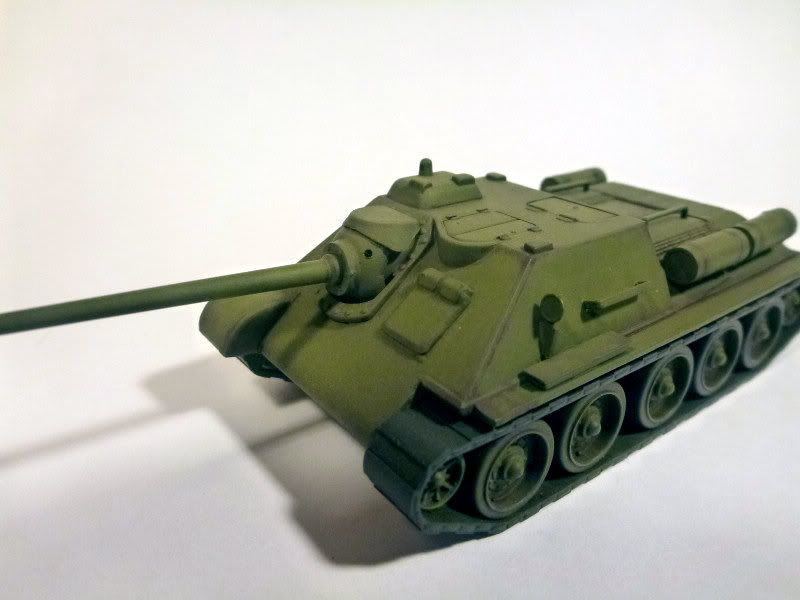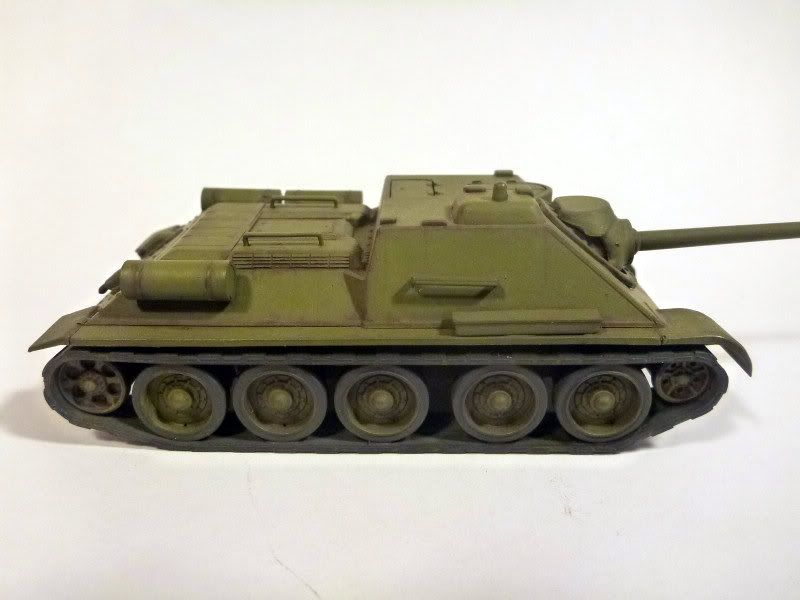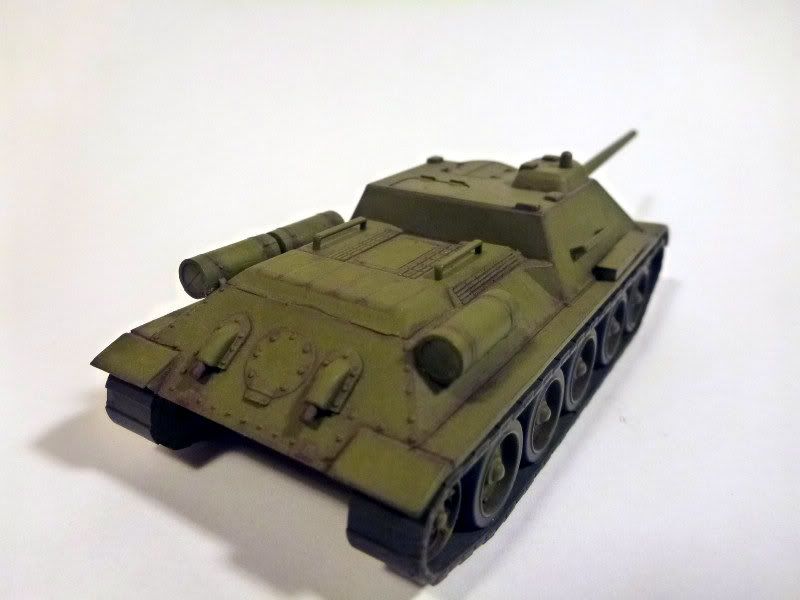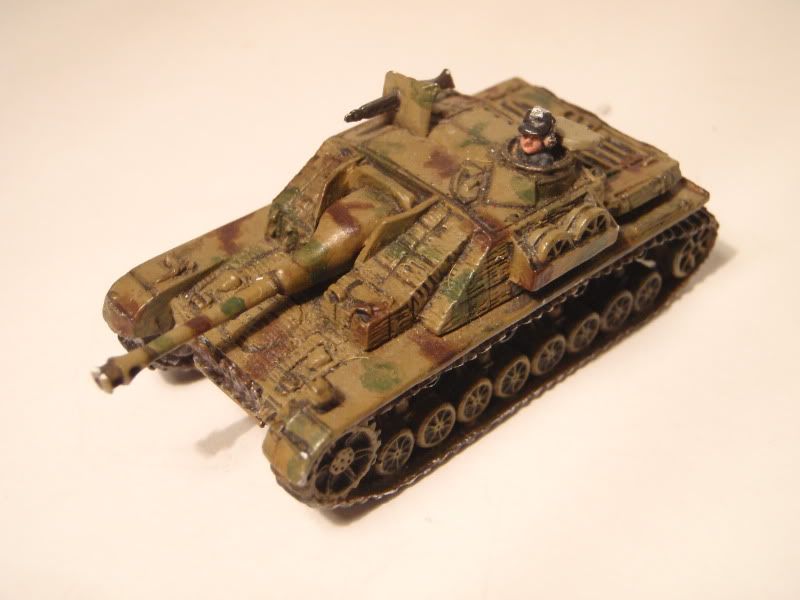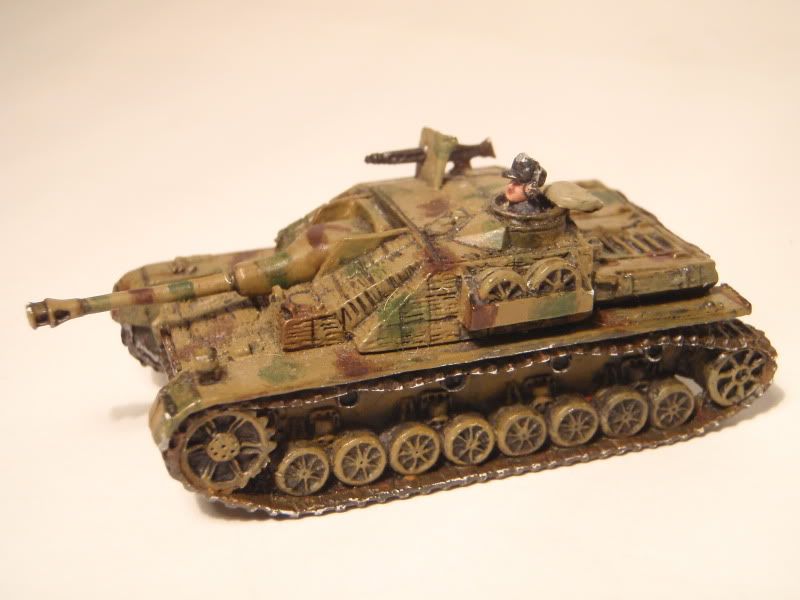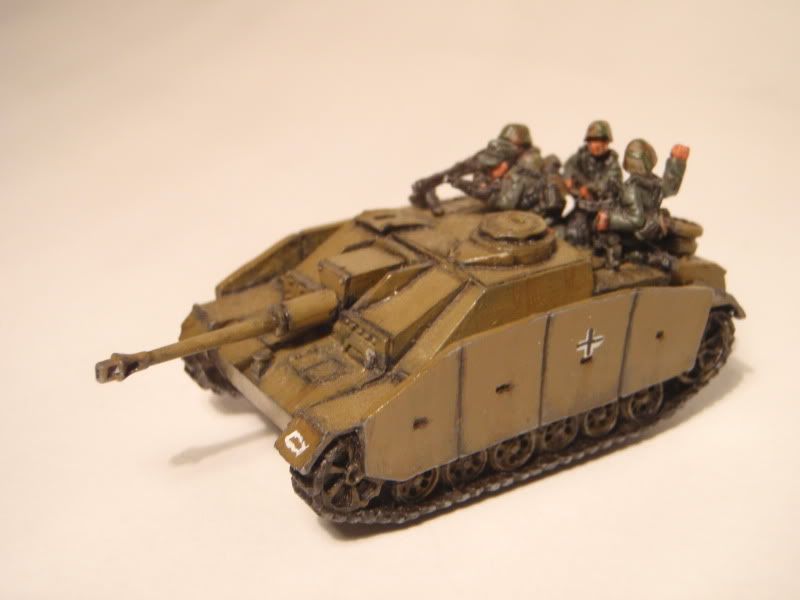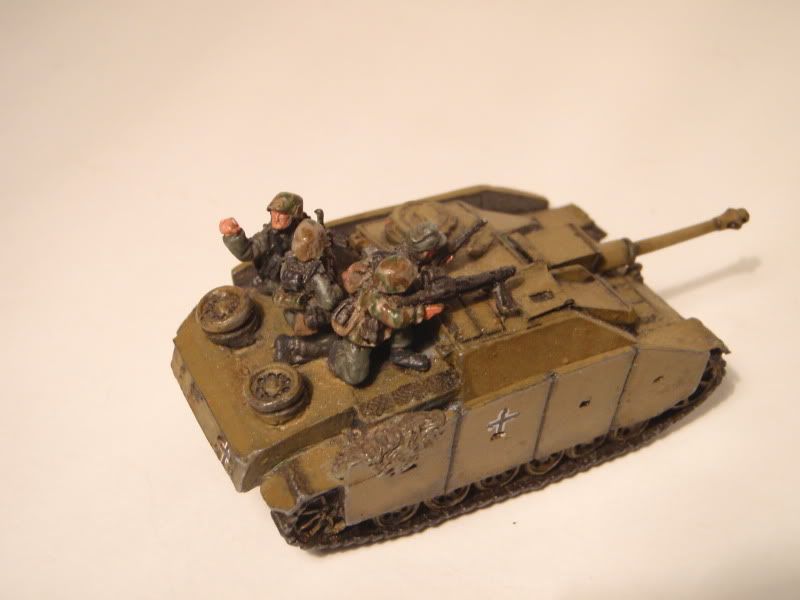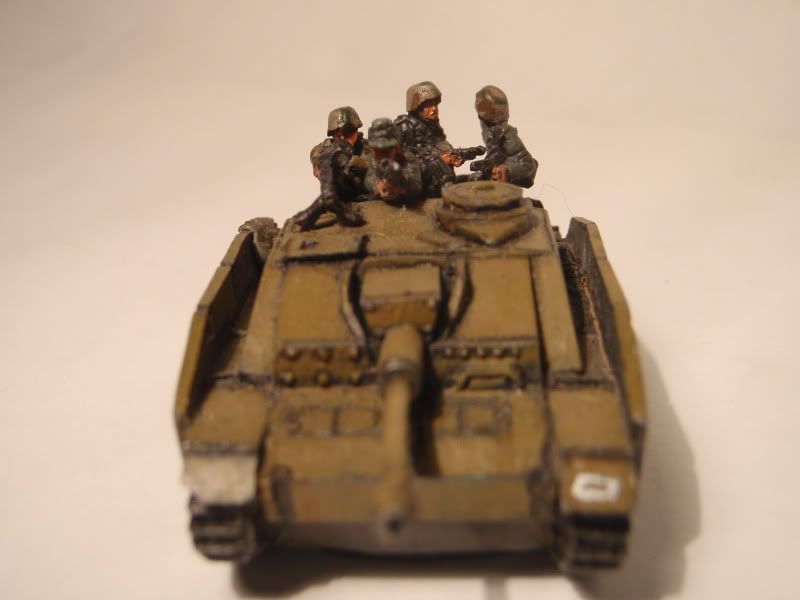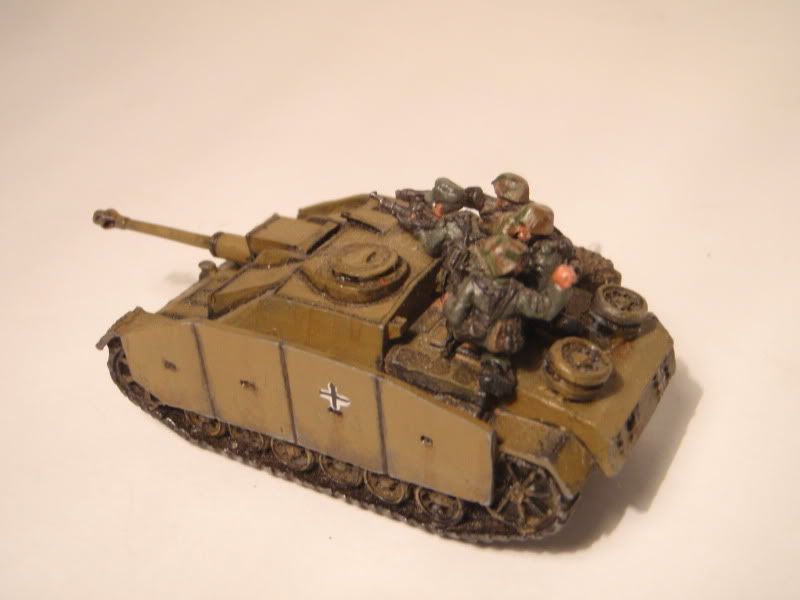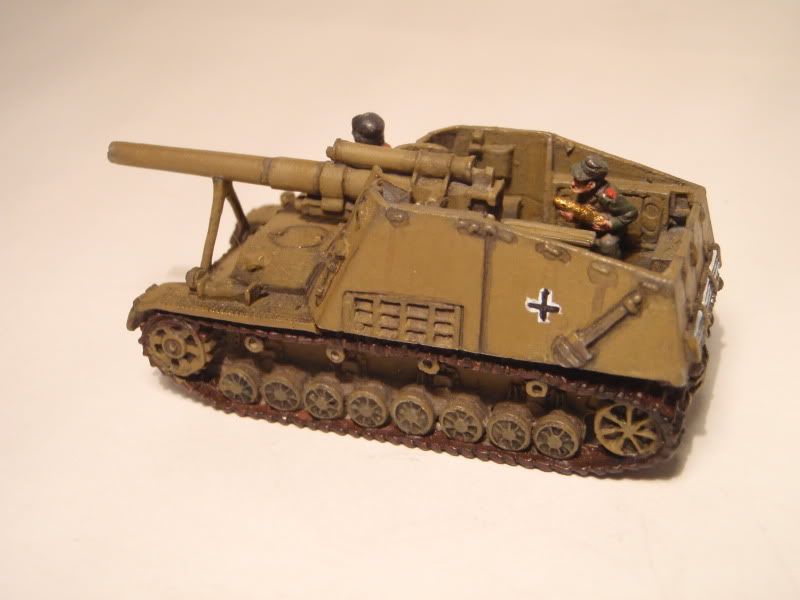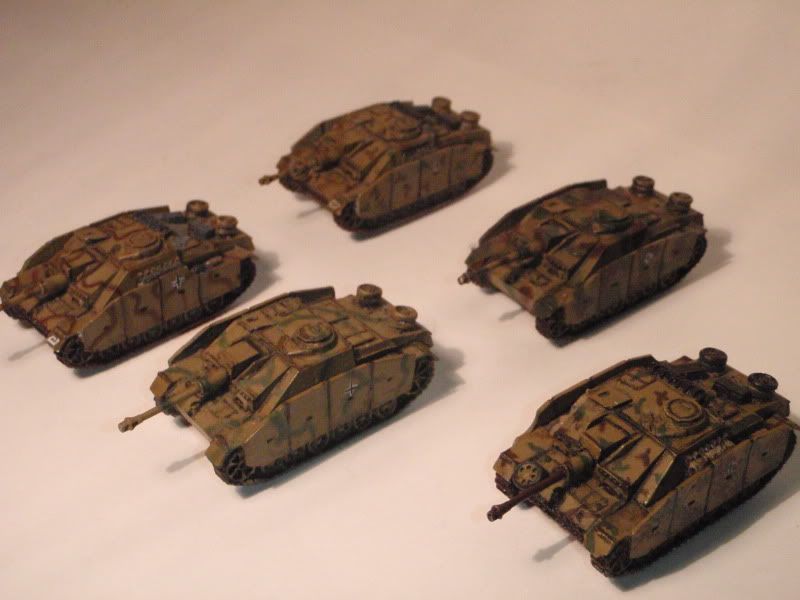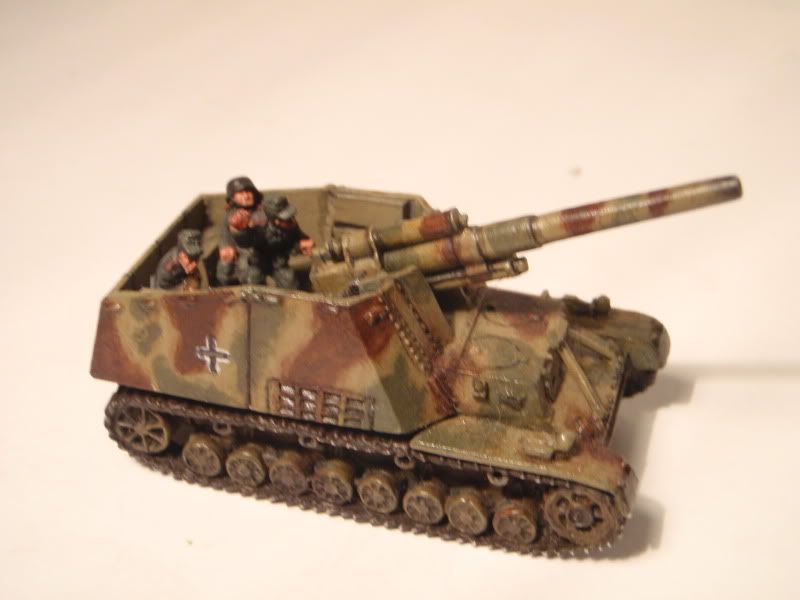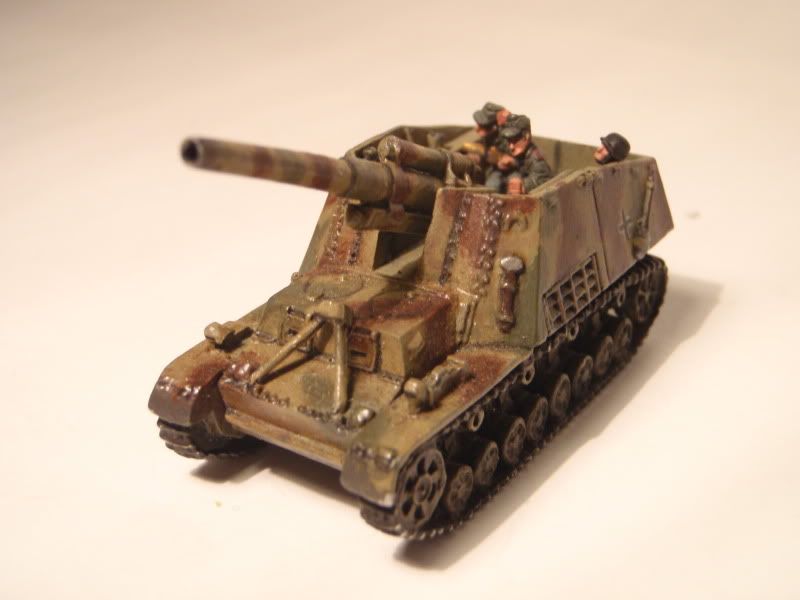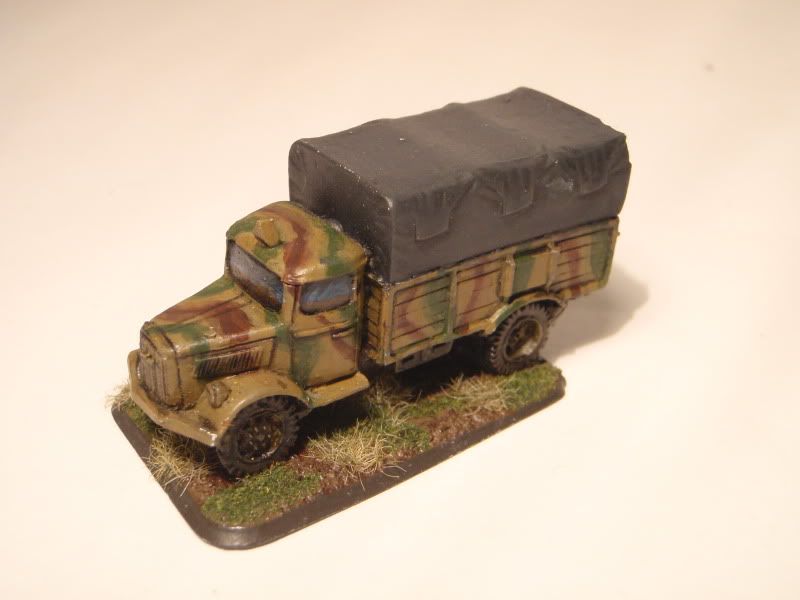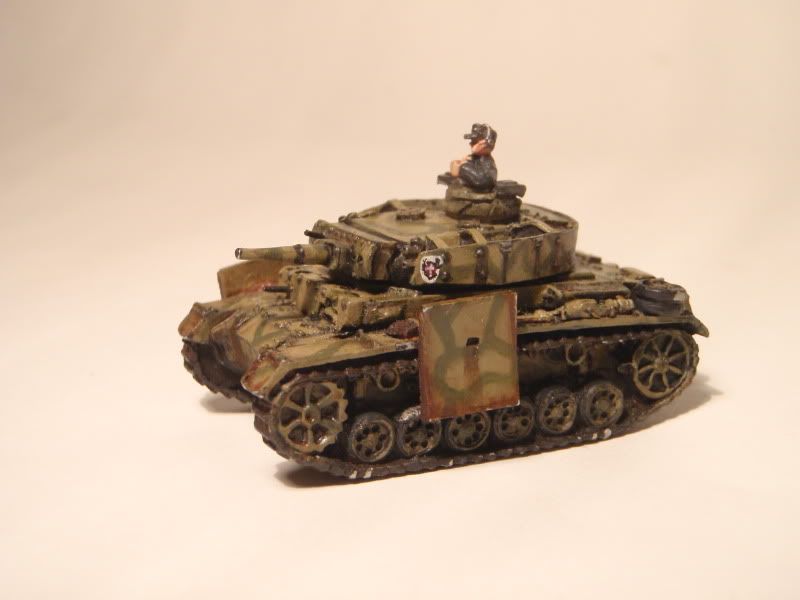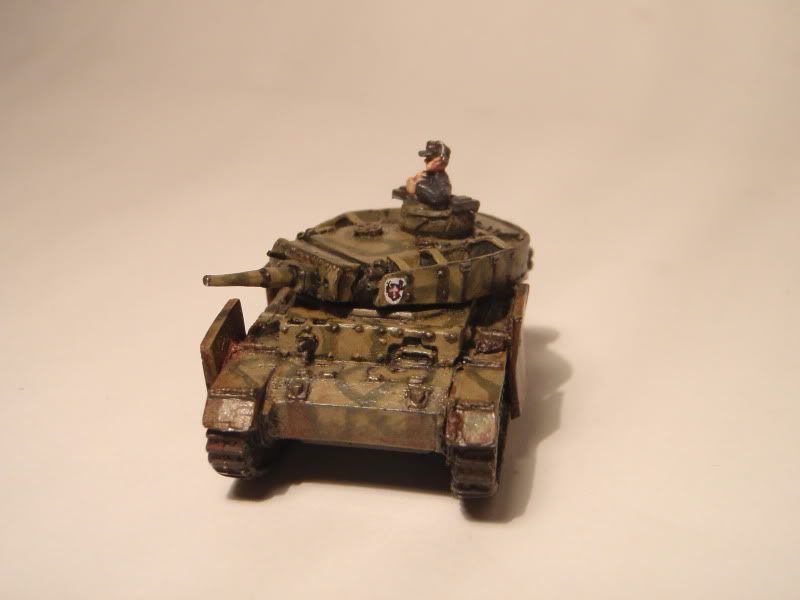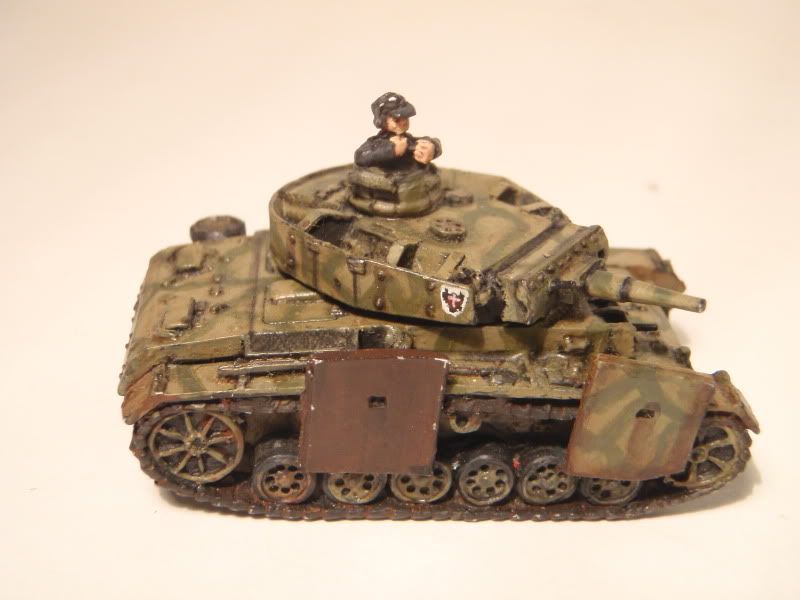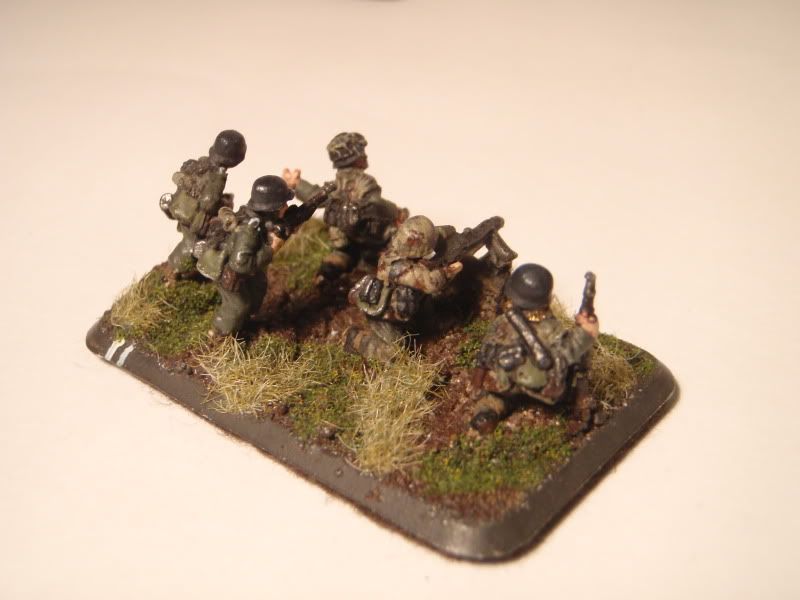A lucky score at a used miniatures bin at my FLGS leaves me in possession of a Panzer III. While not in my planned army list, I could not resist the opportunity. The model came primed black, with the side skirts attached. I've removed some, partially for the "on campaign" look, and partially done to add some interest to the model. After doing some research, I've settled on a paint scheme based on a vehicle at the great battle of Kursk.
I have to be honest. I have airbrush envy. The convention in nearly all modeling guides, magazines, and online galleries is that panzer camouflage is best applied with an airbrush. Since I own no such device, it has been a goal of mine to replicate the tool's effects in the intricate and blended pattern. Starting a few years ago with my Warhammer 40k army, I've been working on the pre shading techniques normally applied via airbrush. Using very thinned paint, I am able to apply a very thin wash in gradual layers, blending the edges. I begin at the centre of a panel, and work toward the edge. I leave the edges dark. Starting with a dark brown base, I highlighted toward a dark yellow blended of Khaki and Khaki Grey.
The green stripes of the pattern were applied over the finished dunkelgelb tank, using a similar series of extremely thinned layers. The base was mixed with the final highlight color of the khaki, and worked toward a darker and more opaque green.
By limiting the pallet to a simpler 2 color camo, I was able to keep brown tones as accents applied as weathering, both dirt and rust. These give a great contrast to the overall greenish vehicle.
I am pleased with the results.

